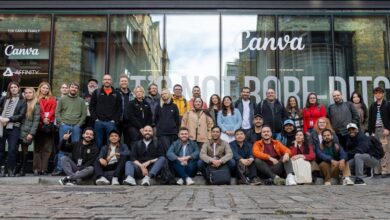The Shifting Sands of AI Strategy at Meta

The tech world, much like a rapidly evolving organism, is constantly shedding old cells and growing new ones. We see it in the constant stream of product launches, the dizzying pace of innovation, and, perhaps most strikingly, in the ever-shifting landscape of its workforce. Recently, Meta, a company whose very name suggests ambition and transformation, once again made headlines, not for a new metaverse demo or a groundbreaking AI model, but for laying off 600 employees from its AI teams. This isn’t just another tech layoff story; it’s a fascinating, if sometimes bewildering, chapter in the ongoing saga of how tech giants are wrestling with the future of artificial intelligence. Especially when you consider that these cuts come hot on the heels of Meta reportedly poaching over 50 top AI researchers from rival labs just this past summer.
The Shifting Sands of AI Strategy at Meta
Meta’s journey into artificial intelligence has been, shall we say, a winding one. From powering recommendations across Facebook and Instagram to ambitious projects aimed at building the foundational AI for the metaverse, their investment in the field has been immense. They’ve poured resources into everything from large language models (LLMs) like Llama to complex computer vision systems and even haptic feedback for VR. It’s a vast, sprawling endeavor, reflecting the company’s deep belief that AI is not just a feature, but the underlying fabric of its future.
But building a future as complex and multifaceted as Meta’s vision requires more than just capital; it demands a clear, cohesive strategy. And that’s where things get interesting. The company has been in a state of continuous reorganization, particularly within its AI divisions, for some time now. This isn’t necessarily a sign of failure, but rather an indication of the intense pressure and rapid evolution inherent in developing cutting-edge AI. Think of it like a chef in a bustling kitchen, constantly tweaking the recipe, adding new ingredients, and sometimes, realizing certain elements no longer fit the evolving dish.
A Tale of Two Strategies: Layoffs Amidst Poaching
Here’s the paradox that truly stands out: Meta, on one hand, is aggressively recruiting top-tier AI talent, reportedly luring away more than 50 researchers from competing labs this summer alone. This kind of high-stakes talent acquisition signals an urgent need for specific expertise, a push towards a particular competitive edge. On the other hand, we have the news of 600 AI job cuts. It’s a stark contrast that begs the question: are these two seemingly contradictory actions part of a larger, more calculated strategy, or a sign of internal turmoil?
My take? It’s likely a bit of both, but leaning heavily towards strategic refinement. The “poaching” suggests a targeted acquisition of specialized, perhaps senior-level talent in critical, emerging areas – think foundational model development, cutting-edge research in generative AI, or advanced multimodal AI that blends text, image, and video. The layoffs, conversely, might be a result of consolidating fragmented teams, eliminating redundant roles, or pivoting away from projects that no longer align with the company’s refined priorities. It’s a ruthless, yet often necessary, process in the high-stakes game of innovation: bring in the best for the new frontier, while streamlining the existing structure.
Beyond the Headlines: What These Cuts Really Mean
To truly understand Meta’s actions, we need to look past the surface-level numbers and consider the broader context of their strategic vision, as well as the overarching trends in the tech industry. These aren’t just arbitrary headcount reductions; they reflect deeper currents at play.
Efficiency and Focus: The Search for a Cohesive Vision
One primary driver behind these Meta AI job cuts is almost certainly a drive for greater efficiency and focus. Big tech companies, particularly those as diversified as Meta, often end up with overlapping projects and duplicated efforts, especially in rapidly expanding fields like AI. Imagine several teams, each tackling slightly different aspects of, say, natural language processing. Over time, as the field matures and internal strategies crystallize, some of these efforts might be deemed redundant or less critical than others.
By shedding these 600 roles, Meta is likely trying to consolidate its AI efforts, creating more centralized, powerful teams focused on specific, high-priority initiatives. This could mean a sharper focus on generative AI, which is proving to be a game-changer across industries, or perhaps a more integrated approach to building AI for the metaverse, an area where Meta has staked its future. It’s about ensuring that every dollar and every talented individual is channeled into the most impactful projects, rather than spread thin across a multitude of endeavors.
The Broader Tech Correction: A Reality Check
It would be remiss to discuss these layoffs without acknowledging the broader economic climate and the ongoing “tech correction.” After years of explosive growth, fueled by the pandemic-driven digital acceleration, the tech industry is recalibrating. Interest rates are higher, venture capital is tighter, and investors are demanding profitability and efficiency over unchecked expansion. Companies across the board – from startups to giants like Google, Amazon, and Microsoft – have been conducting layoffs, restructuring, and re-evaluating their spending.
Meta, having made massive investments in the metaverse that have yet to yield significant returns, is under immense pressure to demonstrate financial discipline. These AI job cuts, while specifically targeted, are undoubtedly part of a larger company-wide effort to reduce costs, streamline operations, and reassure investors that they are serious about optimizing their business model. It’s a stark reminder that even in the most innovative sectors, economic realities eventually catch up.
Implications for the AI Talent Landscape and Industry
The ripple effects of Meta’s moves extend far beyond its internal corridors. They have significant implications for the AI talent landscape and, indeed, the entire industry.
Realigning Talent: Opportunities and Challenges
For the 600 individuals affected, this is undoubtedly a challenging time. However, in the dynamic world of AI, talent remains highly sought after. While the immediate aftermath is difficult, many of these experienced professionals will likely find new opportunities, perhaps at other tech giants, burgeoning AI startups, or even in non-tech industries rapidly adopting AI. It’s a realignment of talent, injecting a surge of experienced AI professionals back into the job market, which could be a boon for other companies looking to scale their AI initiatives.
On the flip side, it also highlights the precarious nature of even highly skilled jobs in a rapidly evolving field. What’s considered cutting-edge and essential today might be restructured or deprioritized tomorrow. This underscores the importance for AI professionals to continuously upskill, adapt, and remain agile in their careers.
The Future of Meta’s AI Ambitions
Ultimately, these cuts are a high-stakes gamble for Meta. By streamlining its AI workforce and strategically acquiring specific talent, the company is betting that a more focused, leaner team will be more effective at delivering on its ambitious AI goals. The success of this strategy will depend on several factors: how well the remaining teams integrate, the clarity of their new objectives, and their ability to quickly pivot and innovate in an increasingly competitive AI landscape.
If successful, these moves could indeed lead to a more efficient and impactful AI division, capable of pushing the boundaries of what’s possible. If not, it could further delay their metaverse ambitions or cede ground to rivals in critical AI battlegrounds. Only time will tell if these latest shifts will help Meta solidify its position as a true AI leader or merely add another layer of complexity to its ongoing transformation.
The tech industry’s rapid evolution, particularly in the realm of AI, often presents us with these complex, sometimes contradictory, narratives. Meta’s recent decision to cut 600 AI jobs while simultaneously poaching top researchers isn’t just a corporate maneuver; it’s a window into the intense pressures, strategic pivots, and constant re-evaluation happening at the forefront of artificial intelligence development. It’s a reminder that innovation isn’t always a linear path of constant growth, but often involves painful adjustments and calculated risks. For those building the future of AI, agility, focus, and a clear vision are no longer just buzzwords—they are essential for survival and success in an ever-changing digital world.





